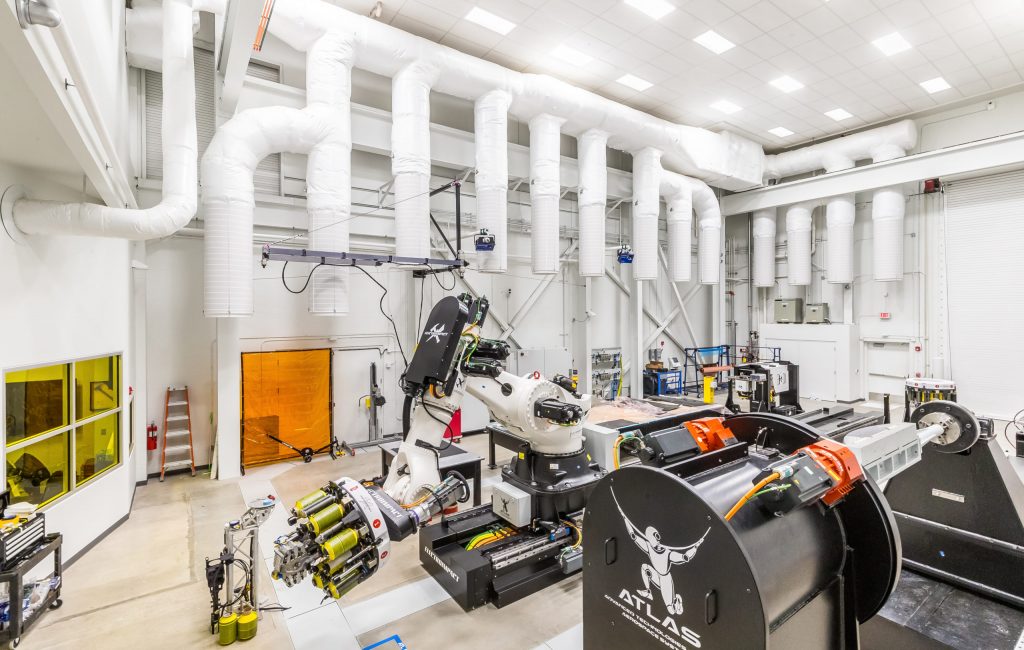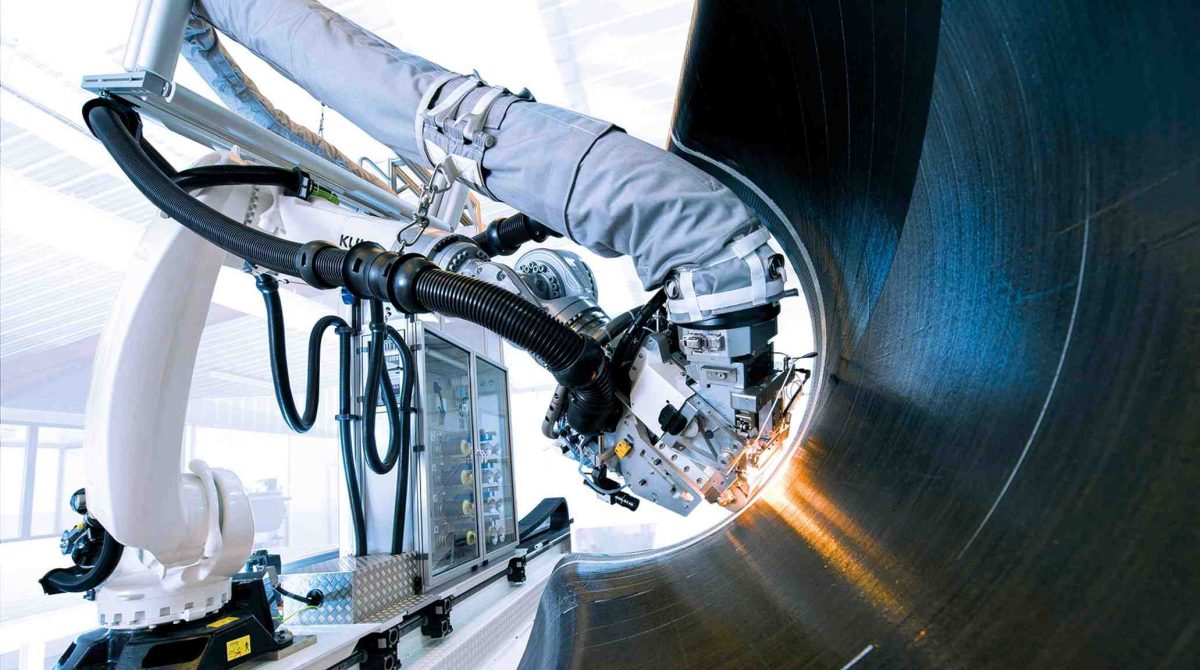

The Industrial Revolution
Manufacturers that are watching the Industry 4.0 movement from the sidelines should take note: the time to transform is now. Companies of all sizes can benefit by integrating digital information from a range of sources within their manufacturing operation and supply chain ecosystem to drive improvements across their businesses.
While Industry 4.0 – also called the Fourth Industrial Revolution – has been moving into manufacturing operations for several years, many companies are discovering that the gap between action and stasis is now critical. The COVID-19 pandemic, coupled with material supply shortages, have altered the manufacturing landscape. Companies with insight into their processes and supply chain partners are rebounding more quickly.
In a 2020 survey of manufacturers by Deloitte and the Manufacturers Alliance for Productivity and Innovation, 85% of respondents indicated that smart factory initiatives are going to be a main driver of competitiveness over the next five years. Investing in an Industry 4.0 transformation will provide companies with the processes and tools necessary to take advantage of emerging opportunities.
Prioritizing Process Changes
Louis Librandi, principal of supply chain and manufacturing operations for Deloitte, describes digitalization as an ongoing cycle, known as the physical-digital-physical loop. First, information is captured in the physical world, creating a digital record of a physical manufacturing operation and supply ecosystem. Next, machines share information, driving advanced analytics of real-time data. Finally, by applying algorithms and automation, this data drives decision-making and action in the physical world.
Because Industry 4.0 emphasizes the digitalization of processes, it’s easy to think that converting your manufacturing operation into a smart factory is as simple as implementing technology solutions. However, Industry 4.0 strives to meet the broader goal of organizational transformation. Technology supports this change, but process improvements must serve as the foundation of smart factories.
This is particularly good news for small- and medium-sized manufacturers that may not be able to fund investments in leading-edge technology solutions. While digitalization of processes is central to driving the significant productivity leaps characterized by Industry 4.0, all companies can take steps to leverage the smart factory trend.
“Technology can be the change agent to start changing some of the cultural norms companies have been battling for years,” Librandi says. “The technology is always interesting, but you need to start by addressing underlying systemic issues.”
By identifying pain points in their workflow, companies can better determine where a technology investment will make the biggest impact.
Identifying Smart Opportunities
Because each company’s pain points are likely to be different, solutions will vary. However, there are a few key areas where technology is being applied in composites manufacturing facilities to improve production workflow, including the following:
- Smart asset management – By digitalizing asset management, composites manufacturers can maximize the throughput of materials to gain cost savings. For many manufacturers this is a particularly simple step, as radio frequency identification (RFID) tags for tracking material are already widely available and relatively inexpensive. RFID tags create a data trail that manufacturers can incorporate with software systems to make numerous process upgrades.
Librandi says that prepreg materials offer a strong example of the benefit of smart asset management. Given the tight constraints around prepreg storage, real-time asset visibility can maximize use of the material within its shelf life. By adding RFID tags to the prepreg material, manufacturers can precisely track the time the material leaves the freezer and how long it has to move through production processes before it must be cured within an autoclave. Real-time alerts can notify material handlers when time is running out.
Manufacturers can also use RFID to track the progress of a specific manufactured component during production to help reduce downtime for production lines. Moving material more efficiently through an expensive fixed asset like an autoclave can translate into significant cost savings. When an RFID tag identifies that a part has finished curing, an automatic alert could be sent to quality inspectors or to material handlers who can then lay up the next stack.
This location information is also valuable in identifying potential bottlenecks and targeting production investments that can drive step improvements in operational efficiency.
- Workforce scheduling – Smart factories can also use data to adapt the production schedule to match what’s happening in real time on the factory floor. This allows manufacturers to respond with greater flexibility to unplanned downtime or new orders and better manage their workforce.
For example, integrating RFID data about materials into scheduling software allows a manufacturer to identify where adjustments may be needed to daily production schedules to accommodate material constraints. If data indicates that prepreg material is reaching its usable limits, manufacturers can reroute capacity to use more material and reduce waste.
- Predictive maintenance – Factories typically avert equipment problems with routine preventive maintenance, whether or not that maintenance is needed. By adding sensors to equipment to track and measure material throughput, equipment vibration and other data points, manufacturers can precisely predict when maintenance is required and reduce unnecessary downtime.
For example, as resin transfer systems age, equipment tends to become clogged. Resin backs up, which can impact efficiency. However, cleaning equipment more frequently than required is a waste of labor and production time that can be reclaimed with better data. With analysis of data gathered by smart sensors, composites manufacturers can shut equipment down for cleaning at the first indication of slowing throughput. Librandi says this simple step can increase overall equipment effectiveness between 8% to 15%.
- Optimized manufacturing quality –Too many manufacturers base their material curing times on trial and error or “what we’ve always done.” However, this approach can lead to under- or over-curing. It’s a problem that manufacturers tend to solve by buffering with additional material, a costly solution. By using machine learning algorithms, manufacturers can mine historic machine interactions to identify optimal cure times, among other factors. This can prevent costly scrap and rework, which leads to significant savings.
Waruna Seneviratne, director of the Advanced Technologies Lab for Aerospace Systems (ATLAS) at Wichita State University’s National Institute for Aviation Research (NIAR), is using machine learning and artificial intelligence solutions to address the issue of part quality with an in-process inspection system.
“With the automated fiber placement machines that we use, efficiency is low because every time we lay up something we have to stop and send a bunch of people to inspect the part. We have to do this with every layer,” Seneviratne says. Between 30% to 70% of manufacturing time may be spent inspecting a single part, he says. Then, if a defect is identified, the production team must try to manually repair the part, with potentially mixed results.
To eliminate this downtime, ATLAS’ system will inspect the part, as well as create its digital manufacturing twin – the data-filled virtual representation of a physical product. This digital twin can help reduce the possibility of defects by pinpointing where and why they occur.
Seneviratne says many composite components carry the potential for defects, but if they fall within an acceptable defect limit there is not necessarily a need to repair the component. However, there are many unknowns inherent within this allowable potential for defects. With a digital manufacturing twin, companies not only know exactly where those defects are but can begin to collect data that can improve manufacturing parameters and drive down these potential defects without the need for destructive testing.
Seneviratne’s team begins by simulating the manufacturing process before making any parts. “We can virtually simulate the process on multiple different machines, because each machine has different capabilities, and then select which machine works best for a particular part without touching any composites,” he explains.
The challenge, Seneviratne says, has been programming a machine learning algorithm that allows for defects. “It's very hard to make the robot make mistakes. But how are you going to create a massive database of defects when the robot doesn’t want to make defects? For that we are looking at different strategies to inflate the amount of limited data that we have on defects – to expand that set of experimental data and then manipulate the data and see whether we can simulate some of those other conditions,” he says.
Scaling Up to a Smart Factory
Building upon these individual strategies is the next step toward creating a large-scale smart factory. That’s how Pactiv Evergreen, a Lake Forest, Ill.-based manufacturer of food and beverage packaging, began its smart factory transition. While the company doesn’t use composites, it works with 14 different materials, including plastic, so it can serve as a beacon for composites manufacturers.
Evergreen Pactiv set a goal of transforming its manufacturing capabilities through a factory asset intelligence (FAI) program that would improve throughput on constrained assets across the operation. While the company had previously worked through several lean-driven, kaizen events to achieve progress, the management team routinely saw its experienced production workforce return to more familiar workflows. Company leaders recognized they would need to make a fundamental process change to secure the desired step-change process improvements.
The company began its Industry 4.0 journey with a pilot project that Christine DeHaven, senior director of operations, says was selected based upon the product mix in the facility, the leadership team within the facility and the potential value of capacity the company expected to unlock within that facility. The FAI program blended Internet of Things (IoT) technology, artificial intelligence and advanced analytics solutions to collect a wide range of data that the company could use to predict material flow and track equipment maintenance needs. Among other projects, the company developed a machine learning algorithm that could predict grinder blade wear and notify production maintenance teams when to replace blades in order to reduce unexpected downtime.
The initial project taught the team the importance of determining what data was necessary to achieve desired project outcomes. “During our first launch, we connected to thousands of data points across the plant and learned that, while all data is important, not all data has the same return on investment,” DeHaven says. After completing the pilot project, the leadership team reflected on what worked and what needed to improve going forward. “We modified our launches to ensure we could define and succeed with the small, sustainable wins and then build from there,” she says.
By starting small and addressing specific problems, Pactiv Evergreen quickly scaled up until each of its 11 production lines were sensorized. From there, equipment was connected to dynamic scheduling solutions. The associated mobile applications gave supervisors real-time insight into constraints, allowing them to make changes to equipment or material flow before a problem occured.
“We measured success by the increase in throughput across the assets,” DeHaven says. “The increased throughput may have come from increased line rate, reduced scrap or reduced mechanical downtime. We continue to drive to reduce the scrap that is generated on our lines, maximizing the quality of our products for our customers.”
The result has been an 11% increase in overall equipment effectiveness that translated to $20 million in annual EBITDA savings (earnings before interest, taxes, depreciation and amortization) for the company.
However, DeHaven cautions that technology tools alone cannot drive this level of savings. “Smart factory technology is reliant on people. We need to review the data, have confidence in the information being shared and use that information to make good process decisions to increase the performance of our equipment,” she says. “It is critical to have senior leadership support across all areas of the business to ensure the digital transition is seen as a business need.”
Working Toward Systemic Change
Structured change management is imperative to the long-term success of any new project, says DeHaven. To achieve systemic change, it may be necessary to bring in outside consultants to help implement specialized processes to achieve higher levels of automation, such as machine learning algorithms.
“A data scientist has a different skillset than most traditional manufacturing companies, especially smaller ones, would normally have,” says Librandi. “That's not something you find in your typical IT or engineering department.”
In addition, maximizing outcomes depends on considering all areas of your operation. Librandi recalls working with an aerospace and defense company with a longstanding lean manufacturing culture. The company was “very good in crafting metrics and getting the data to feed their specific departments,” he says. “However, no one was integrated. They could optimize engineering – they thought – but that did nothing to help their next [step] downstream.”
Once a pilot project is perfected, it’s time to consider how the material and information that comes from that line is used by other lines, departments and potentially other partners. Integrating data across the company is a critical first step toward providing visibility into processes for supply chain partners and moving to a smarter manufacturing ecosystem.
Megan Headley is a freelance writer in Fredericksburg, Va. She can be reached at megan@clearstorypublications.com.

SUBSCRIBE TO CM MAGAZINE
Composites Manufacturing Magazine is the official publication of the American Composites Manufacturers Association. Subscribe to get a free annual subscription to Composites Manufacturing Magazine and receive composites industry insights you can’t get anywhere else.





